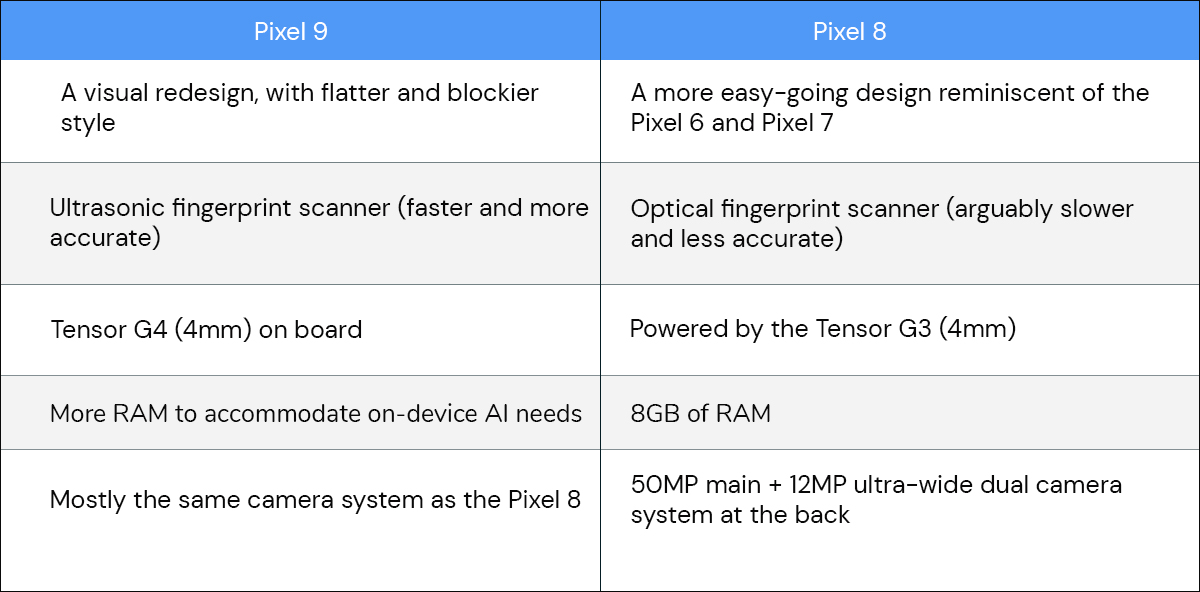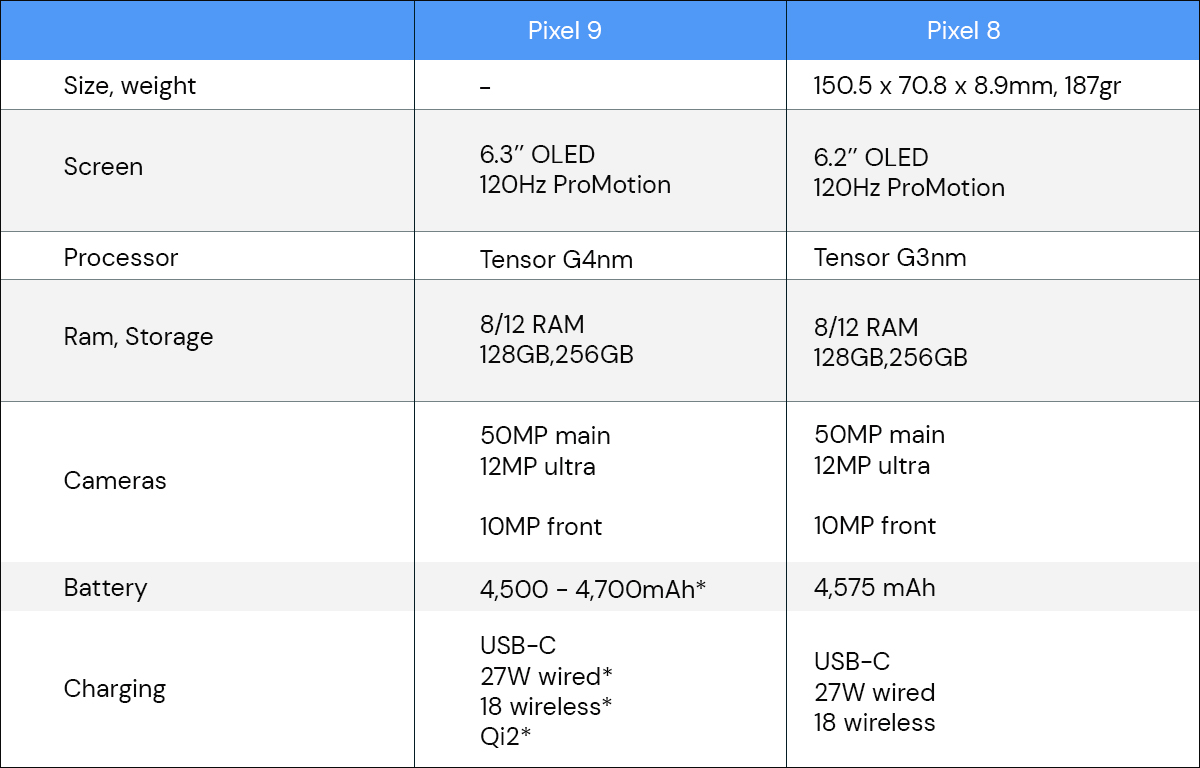

Design and Size
The Pixel 9 features a more refined, flat design with both front and back glass being completely flat, and an aluminum frame. The rear camera strip has been redesigned to stick out from the back, similar to the Google Pixel Fold. In contrast, the Pixel 8 had a slightly curved design, which was comfortable to hold. Both models have IP68 water and dust resistance. Expected colors for the Pixel 9 include Porcelain, Peony, Jade, and Obsidian, while the Pixel 8 comes in Mint, Hazel, Obsidian, and Rose.
Display
The Pixel 9 might have a slightly larger display, possibly 6.3 inches compared to the Pixel 8’s 6.2 inches. The Pixel 8 has a high 2,000-nit peak brightness, which might be improved in the Pixel 9. A major upgrade could include an ultrasonic fingerprint sensor, offering better speed and accuracy than the Pixel 8’s optical sensor.
Performance and Software
The Pixel 9 series will use the new Google Tensor G4 chipset, which is expected to offer better performance and efficiency than the Tensor G3. The Pixel 9 will come with Android 15 and both Pixel 8 and Pixel 9 will receive seven years of software updates. There may be more RAM in the Pixel 9, enhancing AI capabilities.
Camera
The Pixel 9 will likely have a dual-camera setup similar to the Pixel 8’s 50MP main and 12MP ultra-wide cameras. There might be a larger main camera lens on the Pixel 9, possibly introducing a variable aperture for better control over photo quality, especially in low light.
Battery Life and Charging
The Pixel 9 is expected to have a battery capacity between 4,500-4,700mAh, similar to the Pixel 8’s 4,575mAh battery. The Pixel 9 could also support the new Qi2 wireless charging standard, which uses magnets to align chargers and accessories, similar to Apple’s MagSafe.

